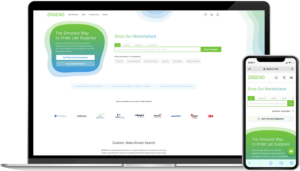How To Cross Train R&D Lab Staff

When looking for ways to improve productivity in your lab, it is intuitive to look towards upgrading equipment or eliminating waste. While these are areas that can be strengthened, one area of waste that is often overlooked is wasting the talent you already have in house.
There is an easy way to capitalize on the most important resource in the lab: the personnel you already have. One easy solution to optimizing your lab without increasing any costs is through cross training. In simplest terms, cross training is the practice of training your scientists in a variety of different lab processes as opposed to having each scientist specialize in one area of the services you offer.
Staff who are trained on multiple processes, tests, and pieces of equipment will be flexible and able to jump in and support projects that are busy while other projects that require more specialized training are awaiting results or supplies. In a newly remote and flexible work culture, having more individuals who are comfortable supporting other projects will prevent delays in research and contribute to a more collaborative lab environment.
Benefits of Cross Training R&D Lab Staff
There are countless benefits of cross training from improved employee satisfaction and retention along with company cost-savings and efficiency.
Cross training benefits for lab managers
- Flexibility in scheduling
- Cost savings on training and onboarding new employees
- Improved employee retention
- Increased job satisfaction
The benefits of cross training come in the form of ease of scheduling for your lab managers, career development for your employees, and the ability to expedite processes that are more time intensive in a short window. While seemingly simple, the ability to maneuver through scheduling conflicts will help lab managers and employees alike. If a lab employee is suddenly sick or must take family leave, their desk will not pile up with work that no one else is able to perform. Employees will be much less stressed when they return from vacation or an emergency.
Cross training also contributes to career development for a handful of reasons. To start, you can get the most out of your staff while giving them a greater feeling of confidence in the entirety of various lab processes. This will attract the best candidates to your specific lab if they are aware of the amount of different knowledge they will gain, making them a more valuable employee in future career moves. Cross training creates cost-saving and time-saving opportunities as well — onboarding new employees can cost upwards of $30,000 per employee, whereas ongoing training is closer to $1,500.
Cross training has other benefits: when moving to a new space, you can complete a quick setup knowing that many employees can help set up many different processes. And importantly, you can get all hands on deck in crunch time. If you only have two employees able to do a given task, but need to hit a research milestone in a short time frame, the potential success is lost if your employees aren’t cross trained.
How to Cross Train R&D Lab Staff
One of the easiest ways to begin cross training at any size lab is to analyze your processes from the business perspective. What lab services are the most sought after? Which are less popular? Is your allocation of lab staff proportional to these numbers? If some of your less popular lab services were to suddenly spike (like we have seen in the global pandemic, for example), would your staff be ready to all switch gears on a dime? These questions are a great place to realize the potential for cross training.
Once you identify areas of concern in terms of service coverage, you can begin to devise a plan of action in coordination with your most experienced lab staff. It is easy to think, “We are too busy to take the time to stop our work and spend time training staff that have been doing the same job for years.” In reality, the time it would take to cross train is well worth the efficiency and flexibility that will come as a result.
Documentation for Best Lab Practices
One thing to keep in mind when thinking about cross training is the actual process of identifying where your lab could benefit from this practice. Be strategic: carefully select staff and begin training every employee on every process. The first step to this is documenting and analyzing the ratio of processes and lab employees with abilities in each process. This could take some time to get accurate data if you’re not keeping it already.
When you begin cross training your staff as mentioned above, it is key to continue documenting who is completing the individual steps to maintain quality over the personnel completing newer tasks. This will help see who was making mistakes, why they are happening, and how you could improve on the next cross training session and all of those in the future. Keeping a good record of how quickly certain employees can pick up new skills will only make it easier the next time around.


